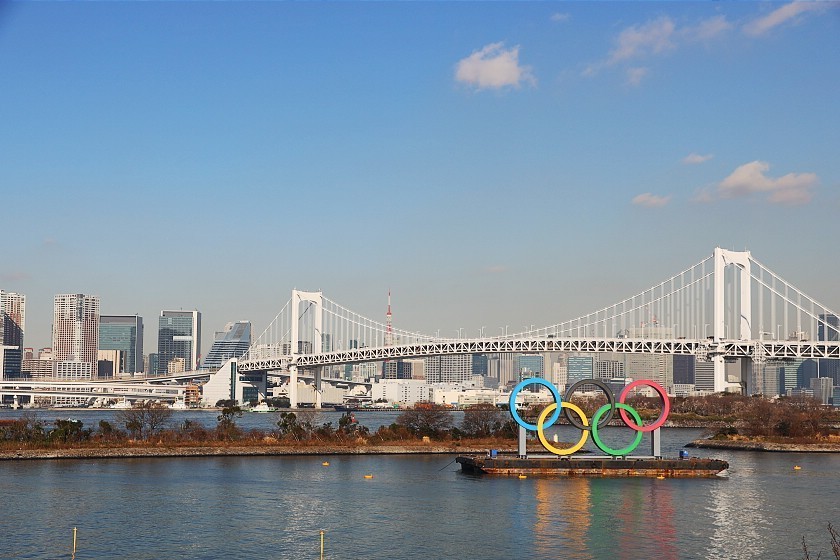Work in Progress on the Olympic Waterfront City

Faced with the need to create new, large-scale venues and public spaces in one of the world's largest and densest cities, the organizers of this year's Olympic events found an ideal solution in land reclaimed from Tokyo bay. Named for a battery of six island fortresses built to resist the American fleet in the 1850s, Odaiba began to take its modern form in 1979 as one of two remaining forts was expanded and connected to the main island by landfill.

With early attempts to develop the area ending in bankruptcy, Odaiba would remain largely vacant until the late nineties when it began its transformation into the popular tourist and leisure zone it is today. Now, with almost exactly six months to go before the start of the much anticipated 2020 summer games, Odaiba is entering a new and exciting period in its development.


So far perhaps the most exciting development has been the addition of the famous Olympic Rings sculpture, symbolising the five continents. Standing at 15 meters tall on a floating platform, the rings are best seen from the Seaside Park where they fit perfectly into the bay view alongside the Rainbow Bridge and Tokyo Tower. Note that the rings are lit up every night until midnight (until 5am from July 17) and will be replaced by the Paralympic symbol after the end of the Olympics.

The organizers' concept is for a series of new venues spread across Aomi and Ariake, with the wide pathway connecting the two sections of island serving as the Olympic Promenade. Here visitors will be able to congregate, move easily between event spaces or just enjoy the atmosphere, with live coverage showing on big screens at two Partner Showcase Areas. The famous Olympic and Paralympic Cauldron will be located on the main promenade between Aomi and Ariake.



On Aomi, the Marine Waterfront Park will host the marathon swimming, triathlon and Paralympic triathlon events, while beach volleyball will be held on the western tip of the island in Shiokaze Park, and first-time events 3x3 basketball, sport climbing and 5-a-side football will take place in the new Aomi Urban Sports Park, with special "warm-up areas" where spectators can watch athletes up close as they prepare for events.

At this point there remains little new to see in this part of the development, with the exception of the floating Olympic Rings added to the Tokyo bay. Scaffolding has begun to spring up on the site of the Urban Sports Park, however, offering a glimpse of things to come.


Over in Ariake, the impressive new Gymnastics Center and Ariake Arena that will host the volleyball and wheelchair basketball appear largely complete from outside, however surrounding areas remain fenced off and are still undergoing construction.


Excitingly, the outline of the BMX racing course has already been laid out in the Ariake Urban Sports Park, which will also hold the skateboarding events. Organizers have announced plans for an Urban Sports Festival to take place beside these buildings along the northern shore of the island, in which visitors can watch demonstrations and take part by riding or skating in the same space.

Further along Tokyo's waterfront and across from the new Toyosu Fish Market, the residential blocks of the Athlete's Village already appear largely complete.






